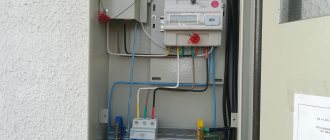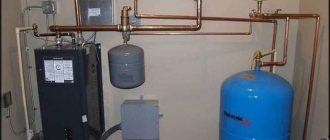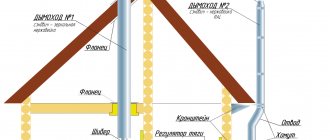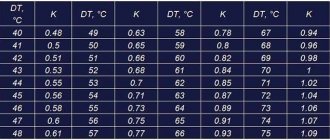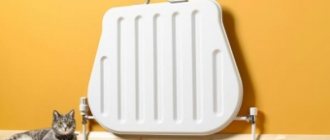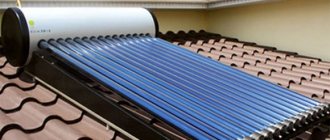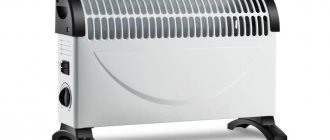The most economical way to heat a private home is a boiler using mains gas. But often, for objective reasons, such an opportunity is not available everywhere. In relative second place in terms of the cost of thermal energy are solid fuel boilers or heating from a fireplace/stove with a closed firebox (if the house is small), but given the need to store fuel and the complexity of maintenance, not everyone likes this heating method. Storing liquefied gas requires expensive containers. Liquid fuel, in addition to difficulties with storage, is characterized by expensive equipment and poor environmental characteristics. Electric heating in a private home does not have all these disadvantages. Except for one thing – the high cost of energy. Although in this case there are opportunities to reduce the burden on the family budget. What features does heating a house with electricity have? We’ll look at the most economical way to heat a house using energy in our article.
Electric heaters do not require chimneys and can be installed anywhere Source poradavam.com
Video description
In our video we’ll talk about heating in a private country house. Our guest is the author and presenter of the Teplo-Voda channel Vladimir Sukhorukov:
Oil radiator
Considered uneconomical - critics argue that it should not be used as a heating device due to high energy consumption and low output. But it is this type of device that has one of the highest efficiency - about 98%. That is, it converts almost all electrical energy into heat (the law of conservation of energy has not yet been canceled), and those minor losses of 2% are due to the resistance of the internal walls of the radiator to the coolant. Yes, it is inertial - it takes a long time to warm up, but it also takes a long time to cool down.
On a note! Accordingly, when using an oil radiator, the room in which it is used will warm up for a long time.
But this is a property of all batteries, including water heating, in which the main method of heat transfer is radiation, which works slowly.
The main disadvantage is the “rough” power control and the use of mechanical thermostats. And such inaccurate control of temperature conditions makes an oil radiator ineffective when trying to optimize the cost of heating with electricity in a private home. And yet, it has a rather high body temperature when operating at full power, which is dangerous if there are small children in the house.
In defense of oil radiators, let’s say that these are still devices for temporary local heating and high energy efficiency has never been required of them.
There are models of oil radiators that can be hung on the wall Source b-sector.ru
Fan heater
It is often written about a fan heater that it burns oxygen. But “oxygen combustion” is nothing more than an oxidation (combustion) process, and the maximum that can burn at a fairly low temperature of the coil is organic dust in the air. Therefore, it is incorrect to talk about burning oxygen (after all, it’s not wood that burns) since this insignificant volume must be replenished as a result of mandatory ventilation of the room.
The efficiency of such a device is slightly lower than that of an oil radiator (part of the electricity is spent on operating the fan), but it is not very different, considering that the power of the fan motor itself is small (about 50 W out of a total of 1 or 2 kW). The advantage is that the room warms up very quickly. Disadvantages are a constant noise level (albeit insignificant) and dust transfer throughout the room. And the main drawback of these household appliances is manual power adjustment and the illusory possibility of creating an automated heating system based on fan heaters
A fan heater is the most compact heating device, and it is great for heating a small area Source romb.ua
Therefore, it is necessary to emphasize once again that the main reason why some types of electric heaters are not suitable for heating a home is not the efficiency (almost all of them are above 95%), but the impossibility of automating system control. It is this factor that does not allow optimizing the operation of the heating system, and without this it is impossible to heat a house with electricity cheaply.
Features of installation work
To make electric heating, you need to decide on the type of equipment to be installed. The order of actions directly depends on this. Having decided on the type of heating system, it is worth finding out how to do everything yourself, what is required for this, and how to avoid common mistakes.
Installation of infrared heated floor
To organize heating you need to purchase:
- infrared film. It is preferable to use products from leading manufacturers that fully meet regulatory requirements. Such products are distinguished by high performance characteristics and can last quite a long time;
- materials for installing a heat- and waterproofing layer;
- a thermostat with which you can control the degree of heating of the decorative coating.
After everything necessary has been purchased, installation work begins. Installation work is carried out in the following sequence:
- The base is cleaned and carefully prepared. All contaminants are removed from the floor. The base is leveled. There should be no significant protrusions.
- The thermostat is installed. The location is selected in such a way as to provide, if necessary, free access to change heating parameters;
- Thermal insulation is laid on the prepared base. To prevent the layer from shifting during installation, insulate it using construction tape;
- The infrared film is being laid. When performing work, you should follow the instructions that come with the infrared film. Laying is carried out only in open areas. There should be no film under the furniture, otherwise its operation will be ineffective;
- To avoid displacement, individual elements are connected to each other, and then the cut line is carefully isolated with bitumen tape;
- The mounted elements are connected to wires;
- The thermostat is connected;
- The installed system is monitored;
- A layer of waterproofing material is laid;
- Decorative covering is installed.
When performing installation work, safety requirements must be observed to prevent accidental injury from electric shock.
Installation of a tubular electric heater
Before starting installation work, you should decide on the installation location. For an oil heater, the place most often chosen is directly under the window, where traditional radiators are located, or on the side of the doorway. Once the location has been selected:
- Markings are applied. Places for mounting holes are marked. To do this, a heating device is applied to the base and points are marked at the location of special elements intended for fixation on the fasteners. The final result largely depends on the quality of this stage;
- According to the mark made, mounting holes are formed;
- Fasteners are screwed into the drilled holes. Most often, fasteners are supplied with the heating device and have the shape of a hook. If this is not included in the package, you can always purchase everything you need to complete the work at your nearest hardware store;
- The device is hung on prepared fasteners. Its performance is checked. The operating mode is regulated. If the device does not include a special sensor that allows you to adjust its operating mode, connect an external device. With its help, you can set the temperature change within a strictly specified range.
Boiler installation
If an electric boiler is used for electric heating in a wooden house, you must first decide on the location of its installation. The choice of location depends on the selected heater model and its characteristics. Double-circuit models allow you to provide not only heating of the living space, but also organize hot water supply. They are installed in such a way that there are no difficulties connecting to water. Most often, a bathroom or kitchen is chosen for this purpose.
Once the location for installing the heater has been selected, a detailed diagram is drawn up, which determines the position of each element of the system. After this, the panels are installed, which will be used to place the machines. Each room should have its own machine to protect the system from negative factors. The wiring is done taking into account the placement of the boiler and other devices. Equipment that will be used for heating is being installed. All elements of the system are interconnected. Their spatial location and performance are monitored.
A test run is being carried out. If necessary, existing deficiencies are eliminated and optimal operating modes are set to create comfortable conditions in the room. If everything was done correctly, the room should become warm fairly quickly. Warming up to the optimal temperature can be done at maximum mode. Then the intensity of the heat flow can be slightly reduced.
Efficient methods of heating with electricity
Heating with electricity in a private house has the main advantages over all others - these are simple and accurate methods for monitoring and regulating the operation of all components and elements. Even the sensors and display of information about operating modes are more accurate than those of equipment using other types of energy carriers.
When we are talking not just about local heating, but about the heating SYSTEM, this means the following:
- Heating works not only when there is someone in the house (therefore, a wood stove is not a system).
- You can manage the system (set up, regulate), including remotely. Therefore, an oil radiator or fan heater simply plugged into an outlet is not a heating system.
Individual electric heating of a private house has four options for heating systems:
- autonomous water heating systems based on electric boilers:
- use of infrared ceramic heaters;
- electric convectors with electronic thermostats;
- electrical converters with inverter thermostats.
All these systems can be adapted into a smart home system and controlled remotely.
Suitable equipment for specific conditions
First of all, it must be said that for each specific case you need to choose the right electric heating system for your dacha. It all depends on how often you visit your country house and for what purposes it was built for you. Let's consider each of the existing situations in more detail.
Rare visit
If you visit your dacha plot extremely rarely, especially in winter, then of course there is no point in installing a capital heating system at your dacha yourself. Here it is recommended to use the connection of electric convectors, fan heaters or oil radiators. Convectors can be wall-mounted, floor-mounted, or installed on casters. Each type of design has its own advantages and disadvantages. We recommend that you immediately familiarize yourself with the tips on choosing an electric convector in order to buy the most suitable model for heating your dacha.
As for fan heaters and oil heaters, they allow you to warm up the room in the shortest possible time, which is exactly what you need for a rare visit to the dacha.
Weekend getaway
If the country house is represented by an insulated capital building, it already makes sense to make better electric heating for the country house yourself. The best solution in this case is a heated floor, which allows you to warm up the room in a short period of time and maintain a certain temperature in the house for as long as needed.
A heated floor alone may not be enough if you decide to install electric heating in a dacha with an area of 100 square meters or more. In this case, it is recommended to supplement the system by connecting infrared heaters that have high efficiency and relatively low energy consumption. A combination of heated floors and IR panels, as shown in the block diagram above, will allow you to quickly and inexpensively warm up a country house for a weekend getaway in winter.
Frequent visit
Well, the last option, which is the least common, is a country house in which the owners spend a significant part of their time. Under such conditions, it is necessary to take care of high-quality heating, and if there is no gas at the dacha, be sure to make electric heating yourself.
It is no longer rational to use equipment with high energy consumption - fan heaters and oil heaters. A more competent solution would be to connect an electric boiler operating together with water radiators.
In addition, it is recommended to connect electric heated floors in the rooms, and, if necessary, install IR ceiling panels controlled by temperature controllers. Such a dacha heating system does not require the installation of a chimney, obtaining various permits and calling a specialist for installation work, which makes it the best if there is no gas on the site.
We immediately recommend watching a video with an overview of a modern electric heating system, which in a short period of time has gained many positive reviews on the Internet:
Video review of an economical heating system for a large country house
Heating with electric boiler
This is a classic diagram of an autonomous heating system. There are two options for heating the coolant - indirect and direct.
Electric boilers of indirect heating come in two types: heating elements and induction.
The design and principle of operation of heating element boilers are quite simple - there is a heating coil enclosed in a sealed metal shell with a dielectric heat-conducting filler, the heat from the spiral through the filler is transferred to the surface of the heating element shell, with which the heating system coolant is in contact.
This is what the “filling” of a 9 kW heating element boiler looks like, which, despite its compact size, is capable of heating a house of 100 m2 Source mirvera.ru
Induction boilers have appeared for domestic heating systems relatively recently. Their operating principle lies in the property of metals to heat up under the influence of an alternating magnetic field. The heating element itself is an inductive coil with a ferromagnetic alloy core, through the “secondary winding” of which the coolant passes.
Scheme of operation of an induction heater Source josri.ru
The peculiarity of direct heating electric boilers is that water not only acts as a coolant, but is also part of the electrical circuit - alternating current passes through it between the electrodes. Hence the name of the boilers - electrode.
Each type of boiler has its own disadvantages. Heating elements form scale, which leads to a decrease in the useful power and service life of the boiler. Induction ones are quite expensive, bulky and have “stepped” power adjustment. Electrode ones have strict restrictions on the quality and composition of water, which must have a certain specific electrical resistance to alternating current.
A cascade of four electrode boilers for heating a large house Source obriy-ua.com
Well, the main disadvantage of heating a country house with an electric boiler is the presence of the coolant itself and the “bulky” circulation system of pipes and radiators. Setting up such a system is costly, and the efficiency compared to direct electric heaters may be lower if circulation pumps are used.
Electric boilers
Electric boilers are one of the convenient and modern types of electric heating at home. They are designed for installation in a pipeline network. An electric boiler performs the same function as a gas and solid fuel boiler. Mounted in the same network with radiators or water heated floors. The power of an electric boiler is significantly greater than that of a convector, since it heats the coolant for the entire building.
Installation of an electric boiler requires the allocation of more power and more powerful wiring. In terms of price, an electric boiler is usually cheaper than a gas one, but the overall system, including installation and commissioning, comes out to be almost the same in price. An electric boiler is often used in conjunction with a gas boiler as an emergency heat source.
Heating from an electric boiler is often used to replace gas or other systems. In this case, the pipeline network remains the same, only the boiler is replaced.
Video description
Video about infrared heaters:
There are three fundamentally different types of infrared heaters:
- reflectors in which the filament coil is enclosed in a quartz glass bulb;
- panel - a heating element is “soldered” in a ceramic monolithic slab;
- film - with carbon coating on a polymer film.
Heating a house with electricity of the first type refers to heaters operating in the short-wave range of infrared radiation.
Such devices can be used as an additional heater, but not as a basic element of the heating system of a private house with electricity.
Disadvantages - the lowest efficiency (due to the visible part of the radiation), lack of precise temperature control and high case temperature.
The second type of device operates in the soft long-wave range. The maximum temperature of the ceramic panel does not exceed 90°C, but on the body it is even lower. There are two types of control - mechanical and electronic thermostat. The first option involves manual control and its accuracy is low. Using electronic thermostats, you can set the temperature with an accuracy of 1°C.
The infrared panel is so safe that it can be hung on wooden walls Source centr-tepla.in.ua
The peculiarity of film heaters is that they heat not the air, but the objects in the radiation zone (and the objects then the air). Therefore, it is not practical to use them at home as the main heating system. Knowing this property of heating films, you can use them in the right place - where a person is located directly at this time, on open verandas, garages. I turned it on, and it was immediately warm; when I left, I turned it off, so as not to heat up the street or the garage where no one was there.
Installing films in the bedroom is uncomfortable: if you are in the zone of action of the heater, it will be hot, if not in the zone, then it will be cold. The best option is to use them as part of a heated floor - this is most comfortable for a person when his feet are warm and his head is cool. Operation is controlled automatically using a temperature sensor-thermostat pair.
If there is not enough space on the floor, then the film heater can be mounted on any free plane Source otdelka-expert.ru
How to make electric water heating economical
Many regions have introduced multi-zone tariffs. If such tariffs are provided in your region, you can reduce the cost of electric heating to a minimum. This will require the installation of a multi-tariff meter and a heat accumulator (TA). A heat accumulator is a large container of water. In our case, it serves to accumulate heat during the “night”, cheaper tariff.
Scheme of water heating with a heat accumulator
While electricity costs much less, the water in the tank heats up to quite reasonable temperatures. During high tariffs, heating does not work, and the temperature in the network is maintained using the heat accumulated in the heat accumulator. Such a system really helps to save money, but the specific result depends on the region - tariffs are very different in different regions.
Convectors
A convector is a metal body of a certain design with an inlet and outlet to create the effect of air convection. There is a heating element inside the convector. Heating elements come in several types (in order of technical evolution): needle-shaped with filaments, heating elements, X-shaped monoliths, and monoliths with “scales” - Hedgehog. The inlet channel is closed with various types of filters to protect against dust, the outlet - with a decorative grille to protect against the ingress of small objects and more uniform distribution of heated air.
The convector body not only serves as protection for the heating element, but also increases the speed of the upward flow. Due to this, with the same power, the room is heated faster than from a water heating battery.
The stylish convector panel looks great in a modern interior Source teplo-vsem.ru
Convectors have three types of thermostats - mechanical, electronic and, more recently, inverter.
A mechanical and electronic thermostat is a thermal relay that turns the convector on and off depending on the temperature set on it. In a mechanical thermostat, the temperature is set by a manual regulator, often “by eye”; in an electronic thermostat, by touch buttons with a digital indication of the temperature value.
The inverter thermostat (control unit), unlike the mechanical and electronic thermostat, which operate in on/off mode, controls the operation of the convector according to a different principle - with automatic change of heating power, which allows achieving high energy efficiency indicators. Such savings can reach 40-70% of electricity compared to the usual on/off convector.
The reason for this saving is in such a thing as hysteresis: this is the temperature difference at which the thermostat turns the device on and off. Convectors with a mechanical or electronic thermostat turn on and off not when the set temperature is reached exactly, but with an error predetermined by the manufacturer. This is done so that the heater does not turn on and off at a high frequency (the lower the hysteresis, the higher this frequency). In this case, the automation would quickly fail. Therefore, such convectors always have a difference of several degrees between turning on and off, no matter how accurately they measure the temperature. And these extra degrees on/off of convectors consume extra electricity.
A convector with an inverter thermostat operates according to a different algorithm: it does not have parameters such as the temperature at which the heater turns on and off. The inverter thermostat does not turn off/turn on the heating, but automatically reduces/increases the heating power depending on the temperature difference and the rate of change of this temperature.
Choosing the right system
Depending on the area of the living space and the quality of wall insulation, a suitable option for autonomous electric heating of the apartment is selected. If you are the owner of a one-room or two-room Khrushchev house, a heated floor system in combination with electric convectors or IR panels can cope. Combinations with infrared heaters are more profitable and efficient, because... thermal radiation will be directed from top to bottom and all the heat will circulate in the lower part of the room. Heating an apartment with electric convectors is better only because the devices do not dry the air and do not have a negative impact on human well-being. There are many reviews that IR heaters with constant radiation have a negative effect on health, which is their disadvantage.
You can find other advantages and disadvantages of infrared heaters in the corresponding article. Yet, as statistics show, in 2022 such devices are actively purchased for household use!
As for electric underfloor heating, it is indeed very popular and effective. Anyone can install a heated film floor under a laminate, even an electric kettle. In addition, the material can only be used to make heated paths in the apartment, and not to lay film over the entire floor area. This heating option will have a positive effect on energy savings and at the same time will effectively warm the room.
If you live in a three-room or four-room house, then it would be more reasonable to use the connection of electric water heating in the apartment. This is due to the large total area of the rooms, which will require a full-fledged, powerful heating system. For example, if the area is 130 sq. m., with the calculation of 1 kW/10 sq. m. it will be necessary to install no less than a 13-kilowatt bundle of electric heaters. Of course, in winter you will spend a lot of money on the operation of an individual electric heating system. In addition, to use this option, the wiring must be powerful and able to withstand high current loads. In this case, you cannot do without replacing the electrical wiring in the apartment, which, again, will hit your budget. At the same time, if you use water radiators powered by an electric boiler, the heating will be autonomous and less expensive, which will allow you to “kill two birds with one stone.”
We recommend that you immediately read the article on how to properly connect a boiler to the network with your own hands so that you don’t make mistakes and the system lasts longer!
An example of a real system with an intelligent control circuit for electric heating at home
NOBO, a leading European manufacturer of convectors, produces two compatible systems for “smart” control of electrical appliances. Including “warm floors” (via a thermostat) and any other household appliances that are connected to the network (via a panel, a “break” in the circuit or turning on/off sockets). To do this, they produce special thermostats, socket receivers and hidden-mounted relay receivers.
Using such a system, you can monitor and manage the operation of up to 100 devices or group zones. And thermostats of the 700 series provide 4 operating modes for convectors: comfortable, economical, non-freezing (air temperature 7°C) and “off”. According to the manufacturer, the flexibility of such a control system for convectors and heated floors allows you to save up to 25% on electric heating at home.
One of two control schemes for a multi-zone electrical system Source stroydoma74.ru
Which option do we recommend?
Most often, residents of a house are encouraged to use electric heating by two facts: the lack of gas with a reluctance to burn with coal and the financial component.
The surest option would be to make full water heating and use an electric boiler. If any power outages occur, you can safely resort to an alternative option.
If you need to provide heat to one or two rooms, then building a full-fledged boiler room does not make sense. In this case, we would buy ordinary electric convectors and use them.
Other heat sources
To estimate how much an electric heating boiler consumes per month, you need to compare it with other energy sources. It should be taken into account that the efficiency of fuel boilers does not reach a hundred: for gas boilers it is about 93%, for wood and coal boilers it is about 85%.
Below is the cost per 1 kWh for different types of fuel:
- Natural gas: 0.68 rubles, taking into account efficiency – 0.75 rubles.
- Oak firewood: 1.09 and 1.36 rubles, respectively.
- Coal: 1.33 and 1.57 rubles.
- Wood pellets: 1.51 and 1.78 rubles.
- Liquefied gas: 1.99 and 2.13 rubles.
- Diesel fuel: 3.51 and 3.90 rubles.
In each case, heating costs for the season will be (for 17,388 kWh):
- natural gas: RUB 13,041;
- oak firewood: RUB 23,648;
- coal: RUB 27,300;
- wood pellets: RUB 30,950;
- liquefied gas: RUB 37,036;
- diesel fuel: RUB 67,813.
The average price level is given.
In cases where it is not possible to use a solid fuel or gas unit, installing an electric boiler for heating a private home is a good option.
Complete set of heating units
We have already listed the elements of any electric boiler in the basic, cheapest configuration. This is a heating unit, thermostat, automation with an actuator, controls and a temperature sensor.
An important nuance. In budget versions of boilers, the executive element is a magnetic starter. It clicks loudly when the heating is turned on, the sound is clearly audible in the rooms adjacent to the boiler room.
In an extended configuration, manufacturers supply electric boilers with the following equipment:
- low-noise modular contactor instead of a magnetic starter;
- circulation pump;
- membrane expansion tank for a closed heating system;
- overheating and coolant pressure sensors;
- safety group – automatic air vent, safety valve;
- circulation sensor – for induction heat generators;
- weather automatics;
- LCD display, programmer, GSM remote control module from a smartphone.
Naturally, the “fat” equipment of an electric boiler will cost much more than the “poor” one. On the other hand, you will still have to buy an expansion tank, a pump and a safety group. It is much more convenient to install the unit when these elements are hidden inside the housing.
conclusions
Today we looked at almost all methods of electric heating.
The main conclusions can be drawn as follows:
- It should be noted that the use of local heating sources (infrared heating, fan heaters) cannot be used as the main method of heating a house.
- It should be approached by using several types of electric heating in a comprehensive manner.
- High-quality home insulation plays a big role in efficiency.
- Diagram and calculation of wiring and installation locations of all devices, before building a house.
- Use of multi-tariff meters. Application of automation, use of auxiliary sensors.
All these measures will help reduce heat loss to a minimum and make heating comfortable and efficient.
